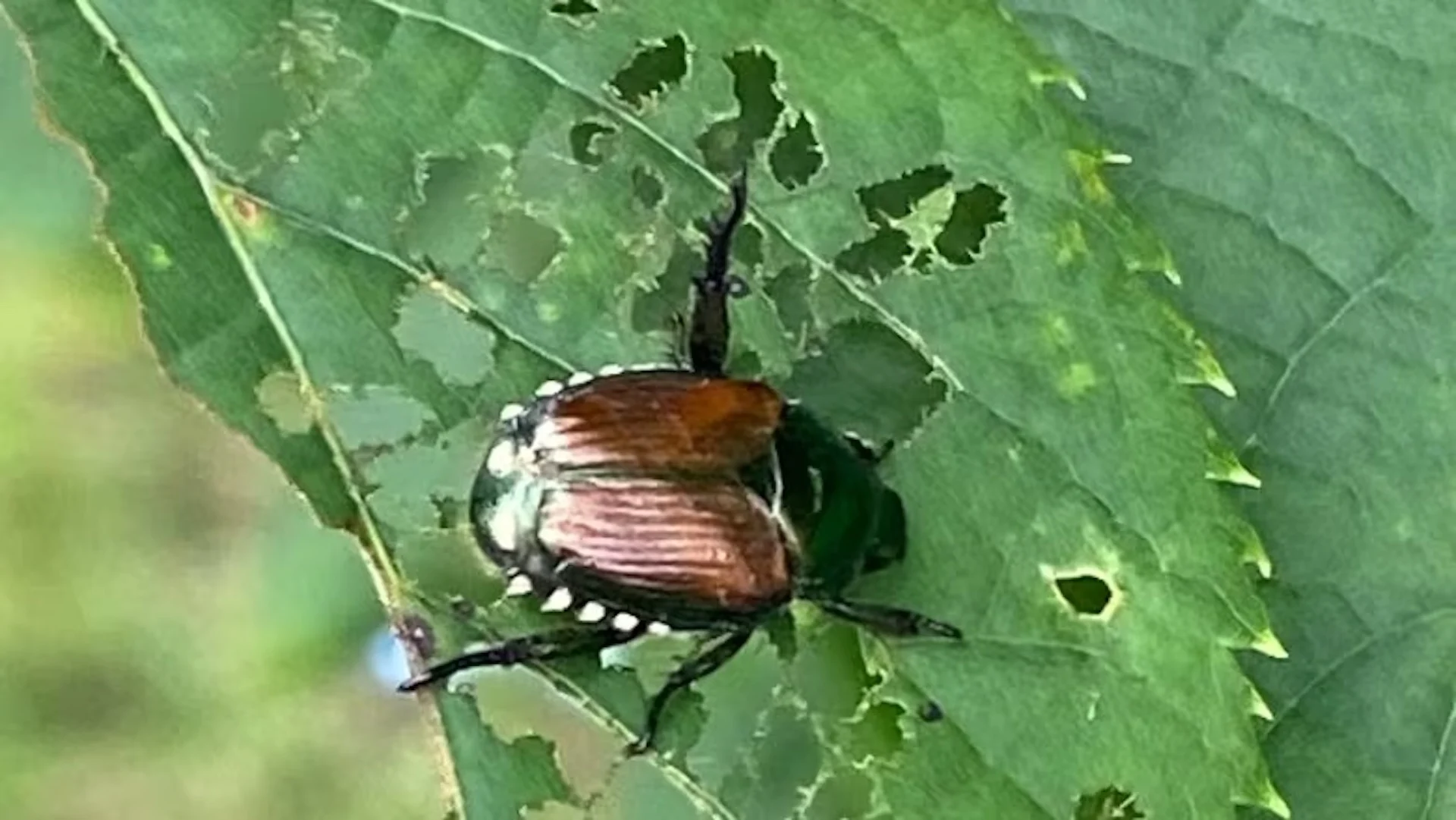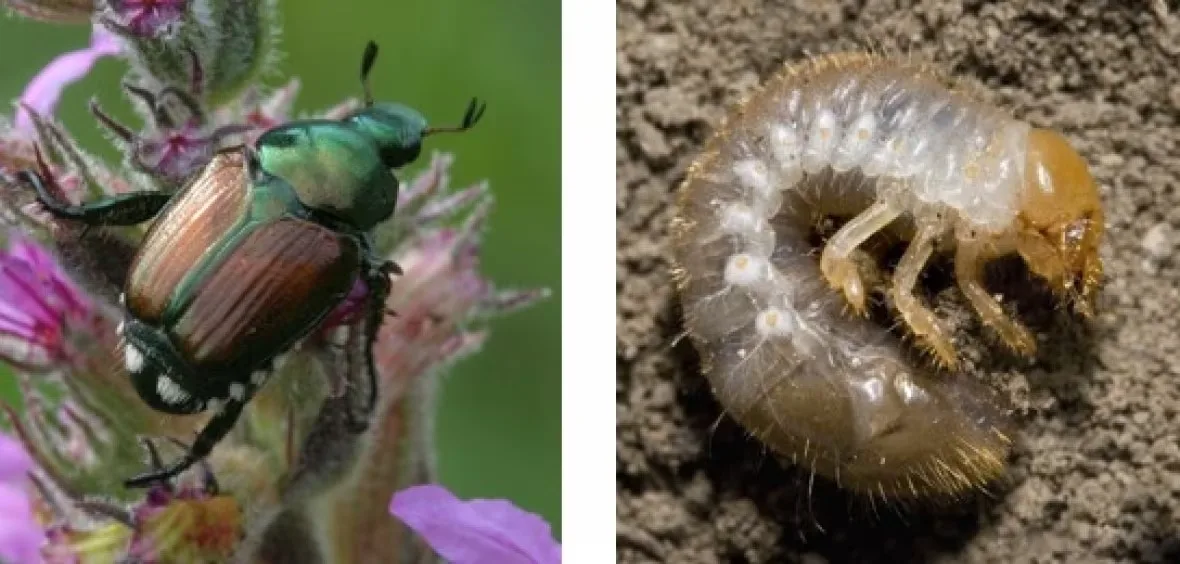
Japanese beetles munch their way through Halifax trees and plants
Juanita Champion has been gardening in her Halifax yard since she moved there seven years ago. This year, she observed three times as many Japanese beetles than she had in previous seasons.
"They're a very bad nuisance," she said. "We're not friends, put it that way."
She said hundreds of them swarmed her rose bushes and dappled willow this year. She put up three traps, but they just kept coming.
SEE ALSO: These tiny invasive bugs are devastating hemlocks in Nova Scotia
She's not the only one fighting with the beetles. Debra Moreau is a small fruit entomologist with Agriculture and Agri-Food Canada. She's been tracking Japanese beetles in Nova Scotia for nearly 10 years.
She's been watching the beetles spread east from southwest Nova Scotia. Now, she said she's seeing them pretty much everywhere.
"We're seeing incredible spread and this year numbers were particularly discouraging," she said.

Juanita Champion says she's seen three times as many Japanese beetles in her Halifax yard this year than in the past few seasons. (Anna Mandin)
The beetles' history
The Japanese beetle is an invasive beetle from Japan. According to a Government of Canada fact sheet, the beetle was first spotted in Canada in 1939, in the car of a tourist from the U.S. who travelled Yarmouth, N.S.
Paul Manning is an assistant professor in Dalhousie's department of plant, food and environmental sciences. He said the bugs don't fly very far on their own. Instead, they typically catch a ride when people travel across borders.
Their populations are also dependent on temperature. Typically, the beetles take two years to grow into adults. But Manning said really warm weather can cause the beetles to grow faster. Last year was one of the warmest on record. That means this year's beetles could be a combination of last year's eggs and the year before.

A grapevine damaged by Japanese beetles. (Kevin Yarr/CBC)
The beetles eat leaves on plants like grapevines, fruit trees and bushes, and maple trees. Manning said their feeding can kill very young plants, and reduce the fruits of more mature ones. The beetles also eat leaves of trees like lime and linden trees.
Moreau said the insect can be especially harmful to plants at this time of the year, when they're building up sugars and preparing for the winter.
And they can be infuriating for gardeners like Champion.
WATCH: Your beautiful summer blooms may be holding a creepy surprise
Pest solutions
Manning said there is mixed evidence on whether Japanese beetle traps actually work. He said they do catch the beetles, but the traps' pheromones may also attract more beetles into people's gardens.
Manning suggested whacking a branch full of the insects into a pan of hot, soapy water.
But what can you do if you are concerned about your garden next year?

Adult Japanese beetles are around 10 millimetres long, metallic green and have bronze-coloured wings. Their larvae are C-shaped, white and have a yellowish-brown head. (David Cappaert/Bugwood.org/Province of British Columbia)
There are some bacteria and roundworms that kill the grubs in the soil in September when they're newly hatched. And Manning said the beetles' populations really depend on the conditions of the summers before. He said this summer's fires and floods could have killed some of next year's beetles.
But Manning and Moreau both agree, with the large number of beetles in the province, the pest is here to stay.
"I think this is a situation where we're going to have to kind of come up with a manageable plan to live with this pest," Moreau said.
WATCH: How to grow your own eco-friendly rose garden
Thumbnail courtesy of Anna Mandin/CBC News.
The story was originally written by Anna Mandin and published for CBC News.









